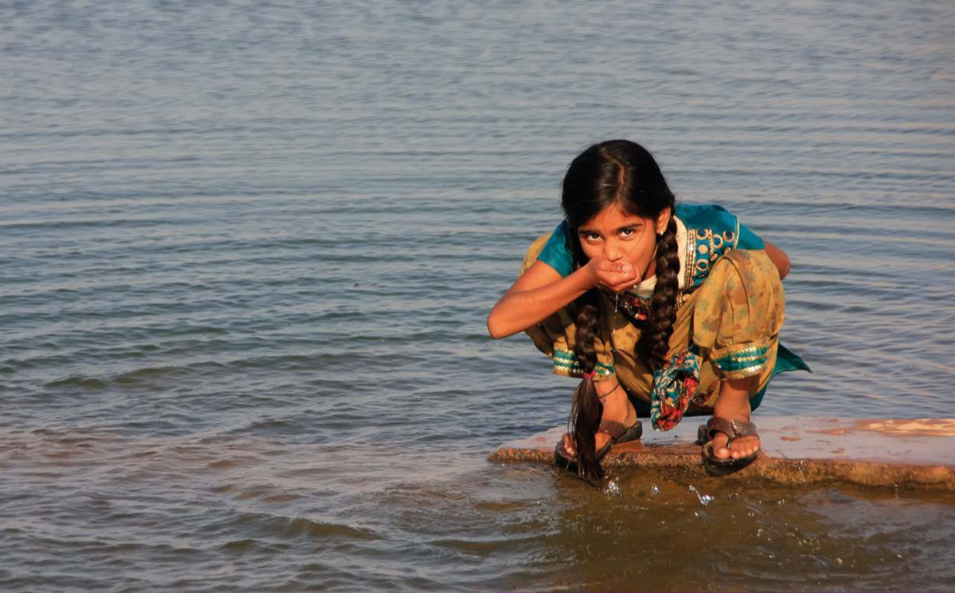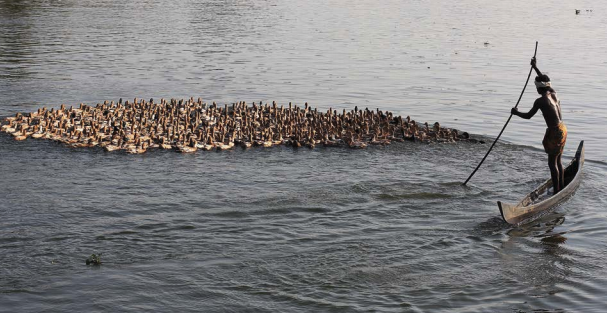Using climate information for Climate-Resilient Water Management: Moving from science to action

Introduction
Climate change is already having an impact on the water cycle. In particular, climate change is thought to be making the monsoon more erratic and unpredictable, and leading to a decreasing number of rainfall days but with heavier intensity. In addition to shifting such baseline conditions, climate change is projected to increase the frequency andseverity of both floods and droughts. In parallel, in South Asia, as in much of the world, water demand is increasing in response to population growth, urbanisation and increased per capita demand, increased industrial demand and a continued relatively high dependence on agriculture. This increase in demand is expected to continue and accelerate, especially in the agriculture sector, as temperature rises lead to higher evapotranspiration losses and greater crop water use.
This paper*explores one critical challenge for promoting Climate-Resilient Water Management (CRWM) in South Asia and beyond: the availability and use of high-quality climate information. It is aimed primarily at those designing or delivering projects and programmes on CRWM, as it provides some practical guidance on the role and use of climate information.
It provides specific guidance on:
- The role of climate information in mainstreaming climate change adaptation within water resource management;
- The constraints to integrating climate information into water resource management, and how to overcome them; and
- Working in different data environments.
Listen to a short audio abstract on this framework, by Karen MacClune & Kanmani Venkateswaran:
Recommendations
The paper suggests 10 recommendations for how climate information should be integrated into WRM (see page 23 of the report for more detail):
- Work with government and stakeholders to align supply and demand for climate information.
- The climate information a project needs to use or produce will depend on the purpose of the project and the wider data and institutional capacity context.
- Climate information that is not requestedor does not meet government-defined goals willlikely go unused over the long term.
- In general, it is important to be clear with the government on the purpose of any information requested to ensure it will be used, and to ensure ‘supply’ and ‘demand’ are aligned.
- Obtain government buy-in by using entry points via their existing priorities and appropriate time frames.
- This also requires that those expected to‘use’ the climate information are key stakeholdersin its production.
- This means researchers and scientists need to work with government stakeholders on their key priorities, which are often immediate and short term.
- Map existing available data and determine who has it.
- Frequently, multiple entities, both governmental and non-government, collect and maintain climate data.
- In data-deficient environments, mapping can help maximise the use of non-traditional sources.
- In some cases, letters of request from high-level officials will be required; in others, stakeholders have to be approached directly to make the request.
- In medium- to high-data environments, data mapping can help identify what data there is and prevent the collection of duplicate data or introducing parallel structures for collecting data.
- Engage and work with climate champions in government.
- Poor coordination in government constrains access to climate data and the ability to pursue evidence-based WRM.
- Climate champions at high levels can enhance access to key decision-makers and garner commitments from differentagencies to share data and learning.
- They can also be key to scaling out the use of climate information.
- Allocate sufficient time for data compilation,cross-checking and cleaning.
- Collecting climate data from a range of agencies, and cleaning it to the point that it is ready to use, takes substantialtime and effort.
- Short-cutting this process canundermine project results.
- Particularly in data-poor and/or data-protective environments, there may be multiple sources of data that will need to be tracked down, converted to digital format, compiled and compared.
- ‘Ground-truthing’ data in some instances can make the climate data more reliable.
- This will require working closely with data collectors and communities, though this needs to be done with care to avoid incorporating local misperception and/or misrepresentation into datasets.
- Data gaps may require piecing together multiple datasets or may represent time periods that cannot be addressed, meaning it is necessary to modify project plans or goals.
- Invest in capacity-building.
- Given the need for ownership of climate data by those who will be using it for planning and policy, it is important to build the capacity of key local stakeholders to produce climate information, maintain climate models and systems and use climate information over the long term.
- ACT’s experience has shown that local stakeholders, like universities, local consultants and think tanks that have long-term and stable local presence, need to be identified and trained in the following as appropriate:
- Climate risk and why it is important to consider it in planning
- Collecting and maintaining climate data
- Developing climate information systems
- Limitations of climate information
- Develop decision support systems to help decision-makers use climate information.
- Developing and housing decision support systems locally can help ensure the interpretation of climate information is embedded in the local context.
- Such systems can also help decision-makers navigate climate uncertainty, as they tend to focus onprioritising concepts like flexibility, adaptability and redundancy – all ‘good development’ characteristicsin rapidly changing environments.
- Institutionalise the use of climate data andinformation in decision-making.
- This requires local ownership of the production and use of climate information.
- ACT projects have been delivered by local consultants collaborating with key local government departments. This has helped build long-term relationships and ensured that technical support to governments in the production and use of climate information can continue after the project has ended.
- Furthermore, local ownership ensures the project is embedded in, and climate information is tailored to, the local context, and thus reflects local needs, capacities and realities.
- Prioritise problem-driven iterative adaptation approaches.
- The production and use of climate information needs to allow continuous political engagement and respond to political challenges and opportunities.
- This encourages learning among stakeholders from across scales and sectors to ensure the climate information is being usedappropriately within the bounds of its benefits and limitations, and its production is consistently beingrefined to improve its value for decision-making.
Lessons Learnt
WRM has historically been backward-looking, and therefore based on how water resources were used, supplied and stressed in the past. Climate-Resilient Water Management (CRWM) can address this need through a forward-looking approach which takes into account how water supply and demand arecurrently affected by climate and how they are likely to be affected in the future by climate change,in conjunction with processes like urbanisation, development and population growth.
Moving beyond recognising the need for CRWM to adjusting existing WRM plans and projects and designing new projects and plans which incorporate ‘climate-resilient’ elements is not straightforward. It requires the climate information needed to understand current and future climate risks, and the capacity to use that information appropriately, understanding both its value and its limitations.
Key cross-cutting messages:
- Climate information in some form is always available.The paper shares many examples of governments in the region that have had only limited climate data and information available but have still been able to design CRWM policies and projects. It highlights the opportunity to utilise qualitative data derived from community- level engagement tools, as well as what is more traditionally considered climate data, such as data measured at meteorological stations.
- The scope and nature of climateinformation and analysis should ‘match’ government priorities and interests as much as possible. Climate change itself does not need to be the central focus of the analysis. For example, climate information could be subtly woven into analysis focused on increasing agriculture productivity, making watershed planning moreefficient or some other development goal.
- The expected ‘users’ of the climateinformation should be partners in the process of collecting and analysing it. This includes being upfront about the limitations and uncertainty inherent in much climate information and building trust in the analysis.
- Consistent effort should be devoted tostrengthening institutional capacity for collecting and using climate information within the decision- making process.
-
Climate Resilient Water Management can be done now. Anywhere in the world, there is a viable and appropriate avenue for locating climate information, making it relevant to local stakeholders and decision-makers, and incorporating it into the decision-making process.

ACT (Action on Climate Today) is an initiative funded with UK aid from the UK government and managed by Oxford Policy Management (OPM).
Since 2014 the Action on Climate Today (ACT) programme has been actively working in five South Asian countries – Afghanistan, Bangladesh, India, Nepal and Pakistan – to help national and sub-national governments plan for, and manage, the impacts of climate change in the water sector. The ACT programme has championed a Climate-Resilient Water Management (CRWM) approach as a way of increasing the resilience of water systems on which billions of people rely. The programme’s activities in this domain range from preparing urban flood management plans and adapting agriculture to increasing incidences to drought, to mainstreaming climate adaptation in water policies and estimating the future demand for water under different climate scenarios.
Find out more about the ACT programme in South Asia here: http://www.acclimatise.uk.com/collaborations/action-on-climate-today/
Suggested citation
Venkateswaran, K., MacClune, K., Tincani, L., and Biswas, S., 2018. Using climate information for Climate-Resilient Water Management: Moving from science to action. ACT.
Further reading
Related resources
- Find out more about the ACT programme
- Access the full learning paper “Using climate information for Climate-Resilient Water Management” and learning brief
- Listen to a 60-second audio abstract of this paper
- Read "Climate-Resilient Water Management: An operational framework from South Asia"
- Read about Mainstreaming adaptation to climate change within governance systems in South Asia
(0) Comments
There is no content